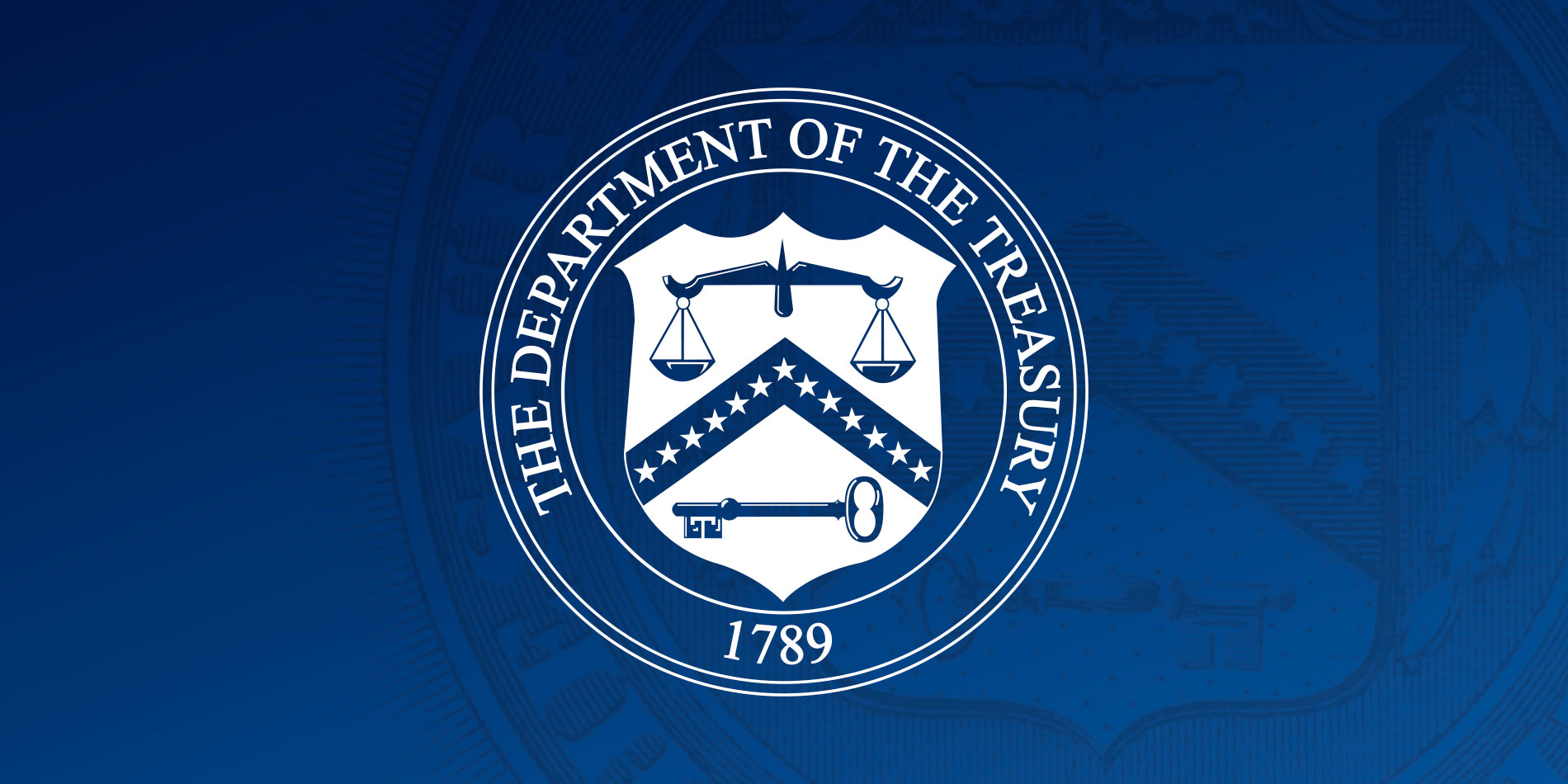As Prepared for Delivery
Good morning, everyone. It’s great to be in India. This is my third time here in less than a year, which means I’ve traveled to India more times than any other country as Treasury Secretary. I’m very glad to be back.
I would like to first thank Finance Minister Sitharaman and the Indian delegation for hosting the G20 ministerial. Ahead of the Leaders’ Summit in September, this week’s convening offers us an opportunity to take stock of what we’ve done – and to redouble our efforts to strengthen the global economy, support emerging and developing economies, and tackle global challenges. I’m looking forward to our meetings over the next few days.
As you know, I traveled to China last week to meet with the new economic leadership team in place in Beijing. During meetings with my counterparts, I emphasized the importance of both countries working together on the global challenges that face us. As the world’s two largest economies, we have an obligation to the people in our nations and the world to cooperate on areas of mutual concern. Last week’s visit served as a step forward in putting our relationship on surer footing and establishing a resilient and productive channel of communication. There is much more work to do. But I believe this trip was an important start. I am eager to build on the groundwork that we laid in Beijing to mobilize further action.
Today, I want to speak about four priorities we will focus on this week: debt distress in emerging markets and developing countries, multilateral development bank evolution, support for Ukraine, and the global tax deal.
Debt Distress
First, let me speak about how alleviating debt distress can stimulate growth and development – and restore stability in emerging markets and developing countries.
As you know, I have pushed hard – both in public and in private – for timely debt treatments for countries in need of relief. Over the past few years, we have seen debt vulnerabilities mount for many countries as a result of the pandemic and Russia’s illegal war against Ukraine. Today, over half of all low-income countries are near or in debt distress. This is double the share of countries that were in this situation in 2015. The economic case for decisive action is clear. When countries find themselves in debt distress, it is hard for them to fund or attract important public and private investments. Without these investments, their macroeconomic foundations deteriorate, making the initial debt problem even worse. Further, with debt service absorbing resources, less is available for essential public spending such as education or healthcare. Restoring debt sustainability can help unlock the massive economic potential of developing nations. It can help them regain lost growth and development and enable them to make investments to address challenges that we are trying to tackle together. When these countries develop and contribute to the global economy, all of us benefit.
This week, I will continue to push for full and timely participation of all bilateral official creditors on pending debt restructuring cases. I was pleased by last month’s progress on Zambia, which I discussed with my Chinese counterparts last week. The Zambia agreement took too long to negotiate but it shows that creditors can overcome differences and agree on common principles for debt relief. We should apply the common principles we agreed to in Zambia’s case in other cases – rather than starting at zero every time. And we must go faster. Our hope and expectation are for Ghana and Sri Lanka’s debt treatments to be finalized quickly so that the IMF can move forward with their first program reviews by this fall. I believe that the publication of a user guide for borrower countries can provide necessary clarity and predictability about the debt treatment process. This includes elucidating the principles that all stakeholders agree to adhere to in debt restructuring cases.
More broadly, I look forward to working with my counterparts to support macroeconomic stability and growth around the world. The International Monetary Fund plays a critical role through policy guidance. It also plays an important role in providing concessional financing to the world’s poorest countries to support reform efforts. The IMF’s Poverty Reduction and Growth Trust – the PRGT – is a key facility that currently provides zero-interest rate loans to the poorest countries. The PRGT is especially important today as we navigate a complex economic environment. Low-income countries are under significant fiscal strain. And in many cases, they are seeing stalling or backsliding on important development outcomes. But the PRGT needs to be put on more financially sustainable footing. I expect the IMF to develop a set of options to do so. My team at Treasury is ready to serve as a partner for the IMF as it considers the options at its disposal – like using the internally generated resources of the Fund to support the PRGT subsidy account.
MDB Evolution
Second, I will continue to build momentum for our collective initiative to evolve the multilateral development banks. Ahead of last year’s Annual Meetings, I joined with other shareholders to call for an evolution of the MDB system to address global challenges with the speed and scale required.
Over the past few months, our broad coalition has worked with the World Bank management to make significant changes. For example, the World Bank is updating its mission statement and refreshing its operating model. And we are working with the World Bank and the regional development banks to implement measures that will more efficiently leverage the resources they have. Our reforms to the World Bank’s balance sheet will responsibly unlock as much as $50 billion in additional lending capacity over the next decade. As part of our evolution agenda, we estimate that the MDBs as a system could unlock $200 billion over the next decade just from the measures already being implemented or under deliberation. There is potential for even more if the MDBs undertake some of the longer-term and more complex recommendations in the G20 Capital Adequacy Framework report. This is $200 billion more in funding that we can use to advance key global priorities: spurring economic growth and reducing poverty, fighting climate change, and promoting human development.
During the Paris Summit last month, I had an opportunity to strengthen our coalition of supporters for this initiative. We were pleased to hear the new World Bank President Ajay Banga announce a package of measures to assist countries in responding to natural disasters, including pausing debt payments. This is particularly important for countries that are especially vulnerable to climate shocks. We now need to translate this momentum into further action.
There are a few specific priorities that we should work on next. First, I will work with the World Bank and my counterparts to push for a framework and principles for the targeted use of concessional financing for global challenges. This will enable us to deploy concessional financing toward areas of greatest impact. I will also be talking to counterparts about ideas for how we can help boost the World Bank’s concessional lending for both low-income countries and to support IBRD borrowers as they tackle global challenges like climate. Second, the World Bank should create a mechanism to allocate additional resources to countries that seek Bank financing to combat global challenges. Third, we would like to see the Bank explore options for lending to sub-sovereign and supra-sovereign actors, like COVAX, to address global challenges. Finally, I look forward to collaborating with my counterparts to streamline the climate finance architecture – a significant source of concessional finance – and to make sure that the development banks and specialized funds work together to deliver maximum impact. We need the whole system to become more effective and efficient.
As we take these actions, we recognize that public financing alone cannot fully deliver on the massive challenges that face us. That’s why it is essential that development banks ramp up their private capital mobilization rates. I know that this is an imperative shared by President Banga and the leaders of many other MDBs. I encourage them to continue to prioritize these efforts.
The recently released G20 MDB Experts Group report is a useful input to the agenda I just described. I am pleased with the report’s emphasis on incorporating global public goods into the mandates of the MDBs – along with its focus on making the operating model of the institutions more responsive through changes to culture, incentives, and risk appetite. I also share the call for much more ambitious private sector engagement and efforts to make the whole system work better together. Finally, I support the request for swift implementation of the Capital Adequacy Framework recommendations. But I believe that we should only explore capital increases after considering the reforms that I laid out along with those in the report. We should build better banks, not just bigger ones.
Over the next few months, we will remain intently focused on the delivery of these reforms – in close collaboration with other shareholders.
Support for Ukraine
Another key priority this week is to redouble our support for Ukraine as it continues to defend itself against Russia’s illegal and unprovoked attack. My visit to Kyiv earlier this year still deeply moves me to this day. Seeing the bravery and resilience of the Ukrainian people up close impacted me personally. During the trip, I also saw the massive difference that foreign assistance is making to the lives of Ukrainian civilians and the Ukrainian military’s front lines. As I’ve said, ending this war is first and foremost a moral imperative. But it’s also the single best thing we can do for the global economy.
Let me be clear: our coalition’s support for Ukraine is unequivocal. The United States will stand with Ukraine for as long as it takes. And I know the allies and partners in our coalition will do so as well. Budgetary support is critical to Ukraine’s resistance. And the United States is proud to be part of a broad coalition that has provided such support to Ukraine. By helping keep the economy and the government running, we are giving Ukraine the support it needs so it can fight for freedom and its sovereignty. We will also continue to cut off Russia’s access to the military equipment and technologies that it needs to wage war against Ukraine. One of our core goals this year is to combat Russia’s efforts to evade our sanctions. Our coalition is building on the actions we’ve taken in recent months to crack down on these efforts.
Global Tax Deal
Finally, I want to briefly mention the work we are doing to make our international tax system fairer and fit for purpose in the 21st century. A little less than two years ago, we reached a historic agreement on a Two-Pillar solution to address the tax challenges of our digitalized and globalized economies. We remain committed to implementing that agreement. Today, many countries are moving forward to implement the global minimum tax on the earnings of large multinationals, which will end the race to the bottom on corporate tax rates. It will enable our government and others to implement tax systems that ensure multinationals pay their fair share and compete on a level playing field with small businesses. We continue to work together in the Inclusive Framework to ensure consistent implementation and we expect additional published guidance soon.
The Two-Pillar solution also reforms the allocation of taxing rights. It provides greater taxing rights to market jurisdictions in order to better reflect modern economic realities. We are very close to reaching agreement on the technical details of that reallocation, and we are committed to doing so soon.
With that, I’ll take your questions.
###
Official news published at https://home.treasury.gov/news/press-releases/jy1617


